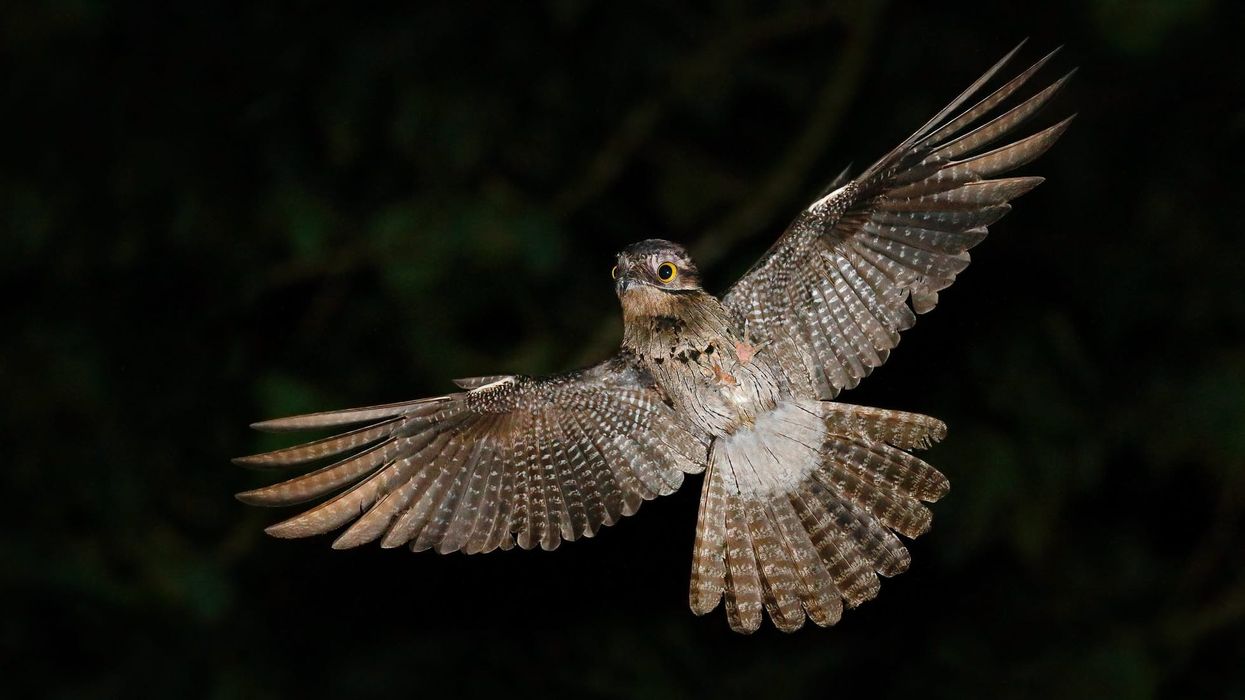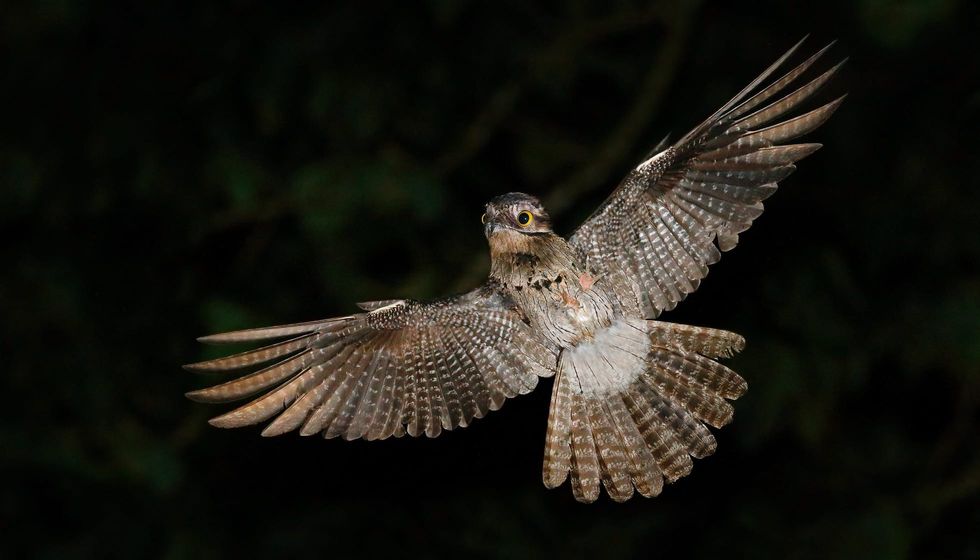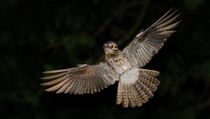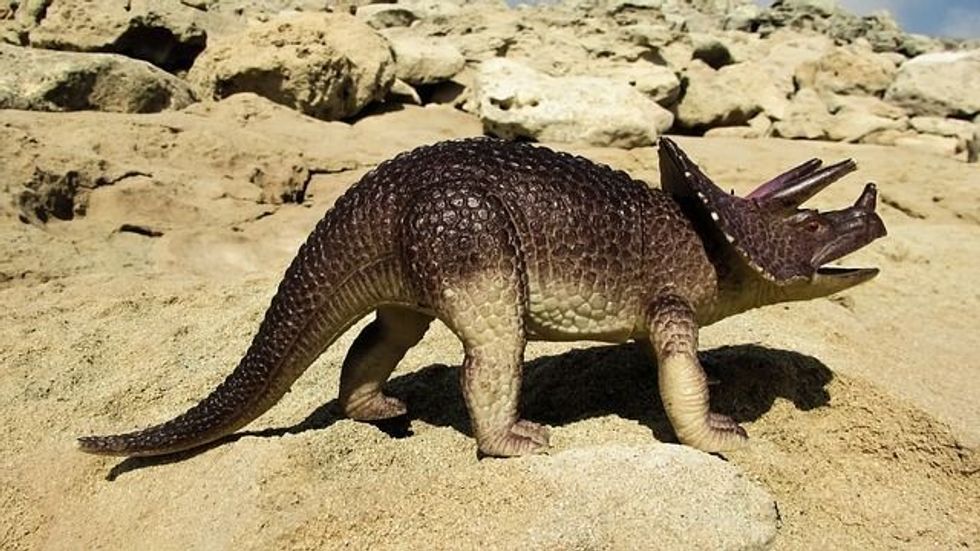When we speak of exotic birds from South American countries, it is impossible to not talk about the Northern Potoo. Its distribution is across many islands and places, such as the Dominican Republic, Nicaragua, Mexico, Costa Rica, Jamaica, Honduras, and Hispaniola.
If you travel to any of these places, you are bound to find them sitting on a perch, on branches, or in the middle of trees, with an even distribution across said islands and places.
The Potoos are recognized around the world by their prominent call, which is similar across various sub-species like the Potoo Nyctibius griseus.
Potoo Nyctibius griseus is the scientific name for the Gray Potoos. They are also known for their similarity to the nightjars and belong to the same family.
Thankfully, there is currently a healthy population of these birds around the world (especially the Mexicanus genus found in Mexico), prominently in locations like the Dominican Republic, Costa Rica, Jamaica, and more.
Like their fellow subspecies, you are very likely to spot one on the branches, with their prominent call.
There is so much more to know about these wonderful birds, their call, breeding, camouflage in branches, and more in Jamaica, Mexico, Costa Rica, and more, so do read on, and also check out the great potoo and common potoo too.
Northern Potoo Interesting Facts
What type of animal is a northern potoo?
The Northern Potoo (Nyctibius jamaicensis) is a type of bird popularly found in Mexico.
What class of animal does a northern potoo belong to?
The Northern Potoo (family: Nyctibiidae) belongs to the class of birds in Mexico.
How many northern potoos are there in the world?
The population of Northern Potoo (Nyctibius jamaicensis) is 50,000-499,999 in the world, prominently in Mexico.
Where does a northern potoo live?
Species of Northern Potoo birds live in the woods, mostly in Mexico but they are also found in the Dominican Republic, Nicaragua, Costa Rica, Jamaica, Honduras, and Hispaniola. They are mostly found in Jamaica, Costa Rica, and Mexico.
What is a northern potoo's habitat?
Northern Potoos (Nyctibius jamaicensis) are mostly found in dry and wet woodland and mangroves, but they have also been seen in golf courses in urban centers. It can also be found in lowland forests and grassland, as well as in farmland.
In the daytime, they can be found perched or nested in larger trees, at least four to seven meters above the land in the forest.
Who do northern potoos live with?
The only social interactions found in Northern Potoo birds are between adults and young while provisioning and giving parental care, otherwise, they are purely solitary Nyctibiidae species.
How long does a northern potoo live?
The life span of Northern Potoo is lower known due to its shy nature. But if we study this species, its longevity is about 12-14 years in suitable habitats (like the climes of Mexico.)
How do they reproduce?
Northern potoos are primarily monogamous breeders by nature with no sexual dimorphism. Northern Potoos (Nyctibius jamaicensis) don't make a nest for themselves, rather in a tree's hollow branch, females lay their eggs.
The breeding season of this species differs by range, but it typically takes place between April and July. This bird, on the other hand, breeds mostly all year. No nest substance is used for making a nest, and the nest is a deep, natural cavity, atop a branch or torn branch of the tree.
Only one white egg with darker shading is laid by the female bird. The male bird does the incubation of the egg in the daytime while the female bird does it at dusk. The young chick is coated in white dust as it hatches. During the night, the small chick is fed by both mother and father by regurgitation.
What is their conservation status?
The conservation status of Northern Potoo (Nyctibius jamaicensis) is Least Concern.
Northern Potoo Fun Facts
What do northern potoos look like?
The mature potoo is a large bird with brownish coloration. The plumage pattern on the upper parts is cryptic, with black, gray, brown, with white color markings on them.
Both the short tail and the wings of the bird have been barred. Gray-brownish to light pale grayish-cinnamon is the color of the underparts with darker streaking, as well as the throat. The neck is normally paler, and the chest has a blackish mottling tint, that varies.
The nape and crown of the head of Potoos are extensively streaked usually black and brown, with a dark split line visible. The bill of this bird has a dark brown color. The eyes of this bird are a bright yellow color (occasionally orange).
The feet and legs of these species are grayish. Males and females have a lot in common. The child has a blackish split line and is paler throughout.

*Please note the main image and this image are of a Common Potoo, which belongs to the same family as the Northern Potoo. If you have a royalty-free image of a Northern Potoo, please let us know at hello@kidadl.com
How cute are they?
The plumage of Northern Potoo, like that of most other nighttime species, serves as camouflage. This characteristic makes this bird appear to be a piece of a broken-off stump or tree bark. Because of its strange and dull colors, in the birds of the world, it does not look cute.
How do they communicate?
Northern Potoo (Nyctibius jamaicensis) vocalizations occur primarily at night and are thought to serve as a means of transmitting territorial boundaries to several other Northern Potoos. In between two calls, the specific sound is heard more frequently, and it can be detected from both sitting and flying birds.
How big is a northern potoo?
The length of Northern Potoo (family: Nyctibiidae) is 18.9-23.6 in. They are found in Jamaica, Nicaragua, Hispaniola, and Costa Rica.
The Great Potoo has an 18–23 in long body. The Great Potoo is one of the largest birds of Potoo species found in southern Mexico, Central, and South America. The Rufous Potoo (Nyctibius bracteatus) is 8.3-9.8 in long.
The Rufous Potoo (Nyctibius bracteatus) is one of the smallest birds in the large potoo family found in Guiana and Peru. The length of the White-winged Potoo is 11.4 in.
The White Winged Potoo is a very uncommon and rare species found in French Guiana and Peru. The Andean Potoo measures 8.3-22.8 in.
The Andean Potoo is usually found in a humid cloud forest in Peru. One well-known species of Potoo is Common Potoo. The average length of the Common Potoo is 13.3-14.9 in.
The Common Potoo has eyes with a pale yellow shade, found in Northern Nicaragua. With the above description, this is clear that Northern Potoo is smaller than Great Potoo but larger than Rufous Potoo, White-winged Potoo, Andean Potoo, and Common Potoo.
How fast can a northern potoo fly?
The Northern Potoo is a nocturnal (most active at night) bird that rarely flies for most of the day. These birds pass their day sitting on trees, half-closed eyes.
How much does a northern potoo weigh?
The average weight of Northern Potoo (Nyctibius jamaicensis) is 12.7-22.9 lb in favorable habitats.
What are the male and female names of the species?
The male and female potoo is not given any specific name.
What would you call a baby northern potoo?
There is not any special name for Northern potoo baby.
What do they eat?
The Northern Potoo (Nyctibius jamaicensis) eats flying insects in the daytime and at night. Perching on a tree and sometimes flying out like a flycatcher to snare a passing flying insect is their usual foraging strategy.
They will periodically fly to foliage to catch an insect while coming back to their perch. These nocturnal birds will not seek prey on the field.
Beetles are one of their favorite foods, but these birds also like to eat grasshoppers, moths, and termites as their diet. A tiny bird was discovered in the abdomen of one Northern Potoo. Species of Potoos ingest an insect entirely, without killing or crushing it after catching it.
Are they dangerous?
Northern Potoo (Nyctibius jamaicensis) aren't hostile or violent types of birds. So you should not worry about getting clawed if you get near their roost. However, calling them nice would be a risk. Usually, Potoos are not dangerous for humans.
Would they make a good pet?
Usually, the Northern potoo is a solitary creature. Potoo birds are active at night, spending the bulk of their time at night chasing and devouring prey.
They are very quiet throughout the day, and if these birds are not in their nesting place, they will normally find a better perch. These species have little human contact due to their shy, wild, and secret disposition. As a result, keeping a potoo as a pet is not a good idea.
Did you know...
The Great Potoo (Nyctibius grandis), the largest potoo bird and member of the Caprimulgiformes group, is a near passerine bird (nightjars and allies). They're also part of the Nyctibius genus, which includes seven species found in tropical America.
This species is nocturnal, similar to owls. Potoos, on the other hand, are very real. Since they're such elusive animals, not much is learned about them, but birders are discovering more about their ancestors daily.
It's strange but true: Potoos have slits in their upper eyelids that help them see things even when their bright yellow eyes are shut.
Sometimes this common question is asked 'Are Potoo and Owl the same birds?'. The concise response? No. Both owls and potoos are nocturnal birds, having the same color and habits, but these two are different birds with different species.
The main noticeable distinction between potoos and owls is how they prey. Owls trap, kill, and bring their food back to their nests by stretching their legs and using their claws. But the Potoo's way of hunting is different.
The Caprimulgiformes family member, the common Northern Potoo, has different subspecies. They are slightly different in size and plumage color. Birds that live in dry areas typically have a more pale shade on their bod. The types jamaicensis and abbotti are very similar, with more streaking on the undersides than mainland forms.
The lambi subspecies are from West Mexico. The lambi has a long tail and wings. Mexicanus subspecies are found in East and South Mexico, Honduras, and off North Honduras.
Is the potoo bird endangered?
Although the Common Potoo (Nyctibius griseus) is not usually considered endangered, it still needs to be protected. Trees are being destroyed all over South and Central America.
Simultaneously, the Common Potoo (Nyctibius griseus) natural habitats could be lost as well. The Northern Potoo has a large range which is uncommon. Some decline is thought to be caused by habitat loss as a result of forest degradation and most Potoos have suffered since they are rainforest natives.
What does a potoo sound like?
The Northern Potoo (Nyctibius jamaicensis) makes loud, guttural calls that are often accompanied by a couple of smaller notes, such as ‘bwaahhhr, ’ah-ah' or 'wahhrr wah-wah'. The first installment of this sequence of sounds can be noticed from afar.
Yelling alarm calls are used by these species. These sounds are a set of wistful howling whistles that differ in pitch depending on the range.
Here at Kidadl, we have carefully created lots of interesting family-friendly animal facts for everyone to discover! Learn more about some other birds from our blue-winged teal fun facts or shrike surprising facts.
You can even occupy yourself at home by drawing one on our Northern Potoo coloring pages.









